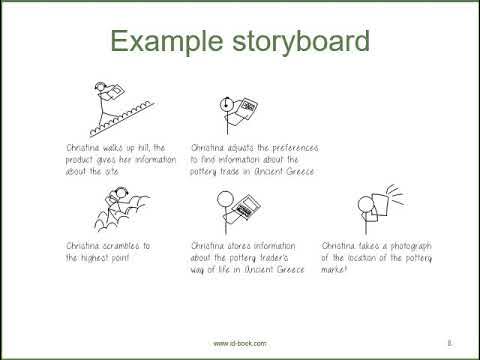Week 13a A13 Process Prototyping Part 3 Prof Ravi Poovaiah
Summary
TLDRIn this final part of a design thinking course, the focus is on hard prototyping, where students move closer to realizing their concept with accurate materials, shapes, sizes, and functionality. Key topics covered include human factors and ergonomics, systems mapping, high fidelity prototyping, and 3D modeling and printing. These techniques help refine and visualize final designs while considering user capabilities and limitations. The session emphasizes the importance of iterative feedback and improving prototypes to align with human needs, with case studies and practical applications throughout.
Takeaways
- 😀 Prototyping is a crucial stage in the design thinking and innovation process, as it helps test and refine ideas before finalization.
- 😀 'Hard prototyping' refers to creating a final, tangible prototype that closely resembles the final product in materials, shape, size, and function.
- 😀 Human factors and ergonomics are vital in the design process to ensure the product aligns with human capabilities and limitations.
- 😀 Systems mapping helps visualize how the components of a solution are interconnected and provides an overview of the broader solution.
- 😀 High-fidelity prototyping involves creating a prototype that closely mirrors the final product in terms of form, function, and usability.
- 😀 3D modeling and 3D printing techniques allow designers to create physical prototypes in three dimensions, using various materials to simulate the final product.
- 😀 Human factors include physical, cognitive, and organizational aspects, all of which are essential for designing user-friendly products and environments.
- 😀 Physical ergonomics considers factors like anthropometrics, visual ergonomics, and physical workload to design products that fit human users.
- 😀 Cognitive ergonomics focuses on human mental processes, such as memory, attention, and perception, crucial for designing intuitive interfaces.
- 😀 Organizational ergonomics addresses teamwork and social interactions, emphasizing how environments can be designed for better collaboration and social engagement.
Q & A
What is the main focus of Week 13 in the design thinking course?
-The main focus of Week 13 is hard prototyping, where the objective is to refine and finalize the concept by creating a prototype that closely resembles the final product in terms of materials, shape, size, color, and functionality.
What does the term 'hard prototyping' mean in the context of design thinking?
-'Hard prototyping' refers to the creation of a prototype that is very close to the final product, using realistic materials and ensuring that it functions as intended. It represents the final stage before the product is fully developed or manufactured.
How do human factors and ergonomics play a role in the prototyping process?
-Human factors and ergonomics are crucial in prototyping as they ensure the product is designed in a way that aligns with human capabilities and limitations. This ensures that the final product is user-friendly and optimized for comfort, safety, and efficiency.
What is systems mapping and how does it help in design?
-Systems mapping is a technique used to visualize how different components of a solution are interconnected. It helps designers understand the broader picture of how each element of a system works together, making it easier to identify relationships and dependencies between components.
What is the difference between low fidelity, medium fidelity, and high fidelity prototypes?
-Low fidelity prototypes are basic representations of a concept, often using simple materials. Medium fidelity prototypes have more detail, while high fidelity prototypes closely resemble the final product in terms of form, materials, and functionality, making them ideal for user testing and feedback.
Why is high fidelity prototyping essential in the design process?
-High fidelity prototyping is essential because it provides a nearly final version of the product, allowing designers to test its functionality, gather user feedback, and make necessary adjustments before final production. It offers a clearer visualization of the product's performance and design.
How does 3D modeling and 3D printing contribute to the prototyping process?
-3D modeling and 3D printing enable designers to create accurate, detailed three-dimensional prototypes. These techniques allow for the creation of physical models that closely resemble the final product, providing an efficient way to test design concepts and make improvements based on real-world interactions.
What are some methods used in 3D modeling?
-Some common methods used in 3D modeling include solid modeling, wireframe modeling, and surface modeling. These techniques help create accurate representations of the product, which can then be used in 3D printing to produce tangible prototypes.
What role does the concept of 'human factors' play in designing user interfaces?
-Human factors are crucial in designing user interfaces because they ensure that the design accounts for cognitive abilities, memory, attention, and perception. This leads to interfaces that are intuitive, easy to use, and suited to the needs of the target user.
How does the concept of ergonomics apply to everyday products like cooking utensils or mobile phones?
-Ergonomics ensures that everyday products are designed with the user in mind, taking into account factors like ease of use, comfort, and accessibility. For example, ergonomic cooking utensils are designed for users with varying abilities, such as those with limited vision or mobility, while mobile phones are designed with larger buttons or text for elderly users.
Outlines

このセクションは有料ユーザー限定です。 アクセスするには、アップグレードをお願いします。
今すぐアップグレードMindmap

このセクションは有料ユーザー限定です。 アクセスするには、アップグレードをお願いします。
今すぐアップグレードKeywords

このセクションは有料ユーザー限定です。 アクセスするには、アップグレードをお願いします。
今すぐアップグレードHighlights

このセクションは有料ユーザー限定です。 アクセスするには、アップグレードをお願いします。
今すぐアップグレードTranscripts

このセクションは有料ユーザー限定です。 アクセスするには、アップグレードをお願いします。
今すぐアップグレード関連動画をさらに表示

Inquiries, Investigations & Immersions_WEEKS 1,2,3,4

Top Batch for IAT & NEST 2025 Preparation - IISc, IISER, NISER Faculties

Week 1a A1 Process: Introduction to Design Process by Prof Ravi Poovaiah

How to make a cardboard prototype

Design Thinking Aplikasi Seni dan Desain dalam Kehidupan Sehari- hari (Seni Rupa kelas X fase E )

Lecture 08 Part 1 Low Fidelity Prototyping
5.0 / 5 (0 votes)
